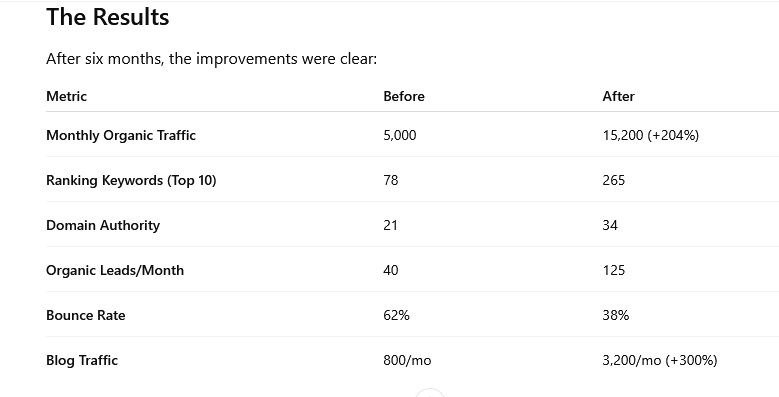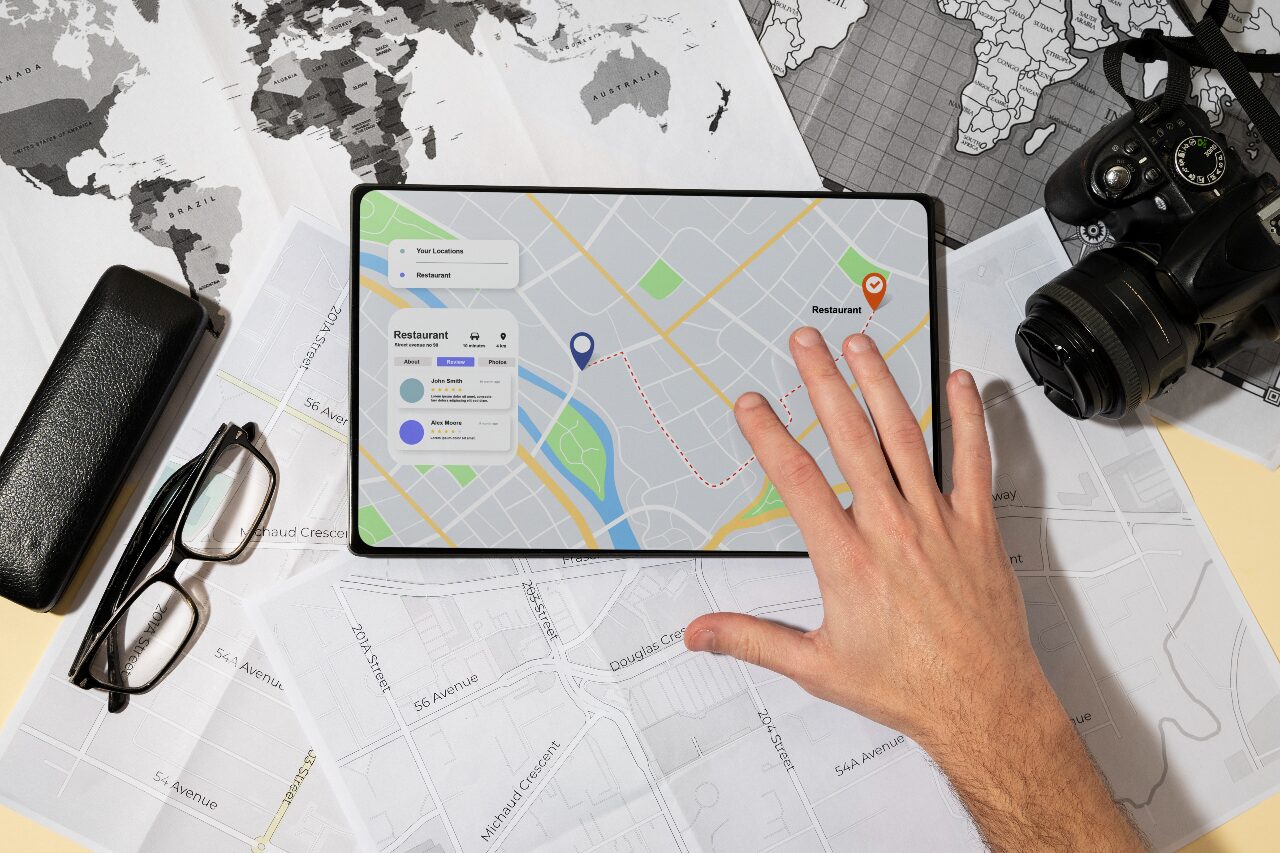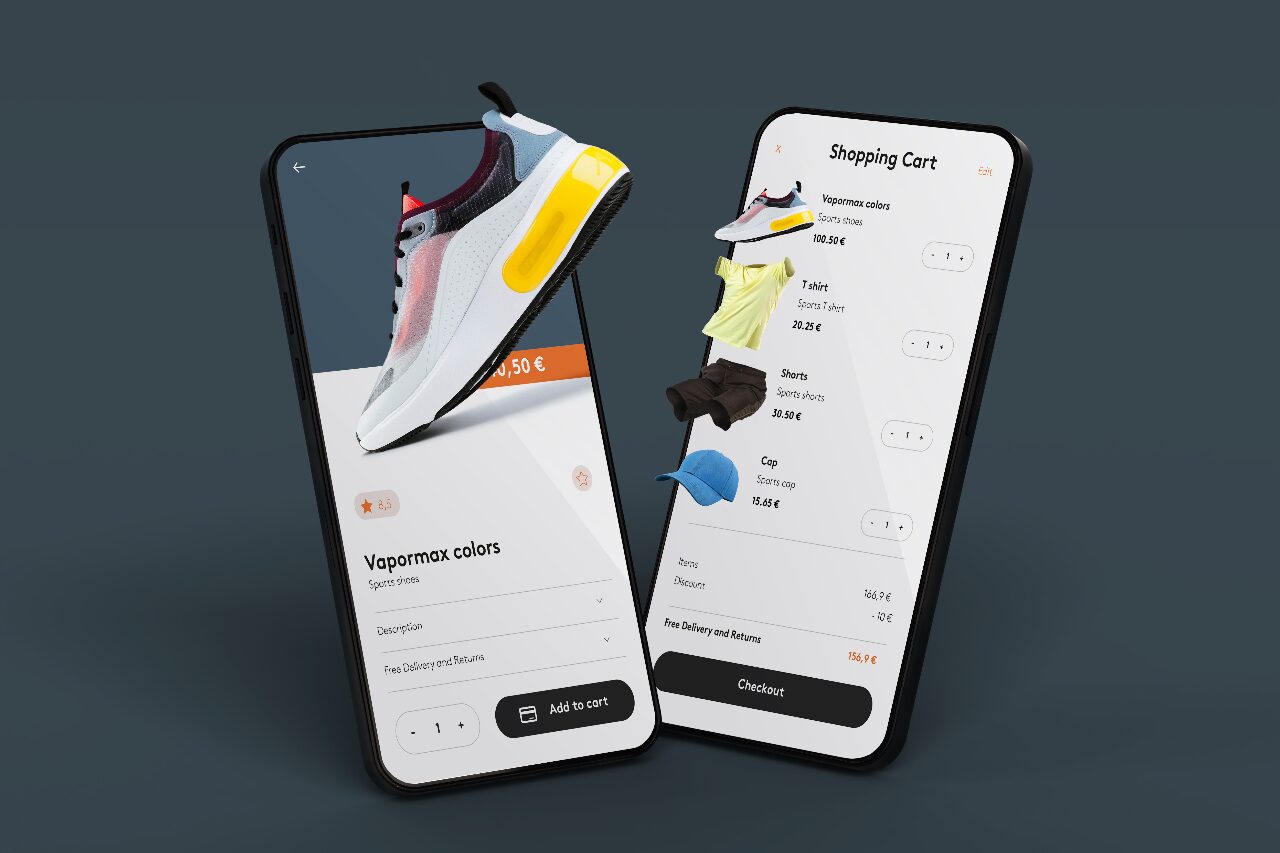Client Background
The client is a mid-sized eCommerce store specializing in eco-friendly household products. They had a solid customer base but were struggling to grow beyond paid ads. Most of their organic traffic came from branded keywords, and blog engagement was low.
Industry: Eco-friendly eCommerce
Target Market: USA and Canada
Monthly Website Traffic (Before): ~5,000 visitors
Organic Leads (Before): ~40 per month
The SEO Challenge
When the client came to us, they had:
- No clear keyword strategy
- A slow-loading website
- Poor internal linking structure
- Duplicate meta tags across product pages
- Very few backlinks
- No local SEO presence
- Inconsistent blog publishing
The goal was to increase organic traffic and leads without increasing the ad budget.
Our SEO Strategy
We implemented a comprehensive SEO plan over six months. Here’s a breakdown:
1. Technical SEO Audit
- Site speed optimization: Reduced load time from 5.2s to 1.8s by compressing images, implementing lazy load, and enabling caching.
- Mobile-first indexing: Made design changes to improve mobile usability.
- Fixing broken links & redirects: Cleaned up 404 errors and optimized redirect chains.
- Structured data: Added schema markup for products, reviews, and FAQs.
2. Keyword Research
We used tools like Ahrefs, SEMrush, and Google Keyword Planner to identify:
- High-intent keywords with moderate difficulty
- Long-tail informational queries for blog content
- Product-specific queries for category pages
Example: Instead of targeting “eco-friendly products,” we focused on “best eco-friendly cleaning products for kitchens” and “natural dishwashing tablets with reviews.”
3. Content Optimization
- Updated all product descriptions with 300–500 words of keyword-rich, user-friendly content.
- Created 20+ blog posts answering common eco-product-related questions.
- Added FAQs using People Also Ask (PAA) data from Google SERPs.
- Improved readability and formatting with headings, bullets, and internal links.
4. On-Page SEO
- Unique and keyword-optimized meta titles & descriptions
- Header tag structure fixed (only one H1 per page, logical H2/H3 hierarchy)
- Internal linking strategy improved to create content silos
- Image alt text and file names were optimized
5. Link Building
- Conducted email outreach to niche blogs and green living websites
- Secured 22 high-authority backlinks (DA 40+) in 4 months
- Used guest posting, niche directories, and linkable assets (e.g., infographics)
- Disavowed toxic backlinks
6. Local SEO Improvements
- Claimed and optimized Google Business Profile
- Added location pages targeting metro areas in the U.S.
- Earned local citations and embedded Google Maps on contact pages
- Encouraged customer reviews and added schema for ratings

Key Takeaways
- A technical audit should be the foundation of your SEO campaign. Speed and crawlability matter.
- Long-tail keywords and structured content can drastically improve your rankings and conversion rates.
- Consistent blogging around real user questions helps build topical authority.
- High-quality backlinks from relevant websites remain one of the most powerful ranking factors.
- Don’t ignore local SEO, even if you’re an eCommerce business.
How You Can Apply This
Whether you’re a startup or a growing brand, these are actionable steps you can begin implementing today:
- Run a free SEO audit using tools like Screaming Frog or Ahrefs.
- Start a keyword map based on real search intent.
- Update your top 10 landing pages with better content and CTAs.
- Create a blog schedule based on common customer questions.
- Begin outreach to industry-specific blogs or directories for backlinks.
- Don’t forget schema and local listing optimizations.
Need Help with SEO?
If you’re serious about scaling your organic traffic and want a partner who delivers results like this, let’s talk.
We offer:
- Full-site SEO audits
- Keyword and content strategy
- White-hat link building
- Ongoing optimization and performance tracking






